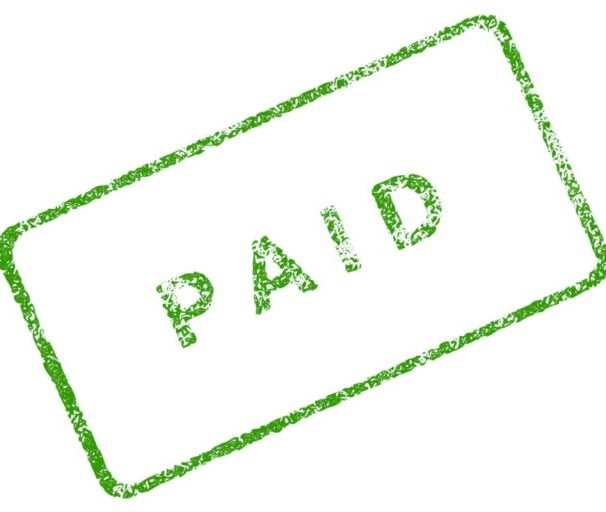According to Amazon’s Payment Terms, Amazon pays Professional Sellers every two weeks. Each payment includes proceeds from all orders (minus different fees such as FBA inventory fees or Giftwrap credits) that were delivered at least 7 days from the latest estimated delivery date. This seven-day buffer means that Amazon values customer satisfaction since it gives the buyer a chance to inspect the ordered product. However, this also means sellers are not getting paid on time or in full which is a significant difference compared to selling via a brick & mortar store.
It is not rare that sellers have to wait for even more than 14 days for payment for various reasons (i.e. if orders are delivered within 7 days of the scheduled payout date, the balance will roll over into the next payment period; actual transfers can take 3-5 business days to be visible on bank account because Amazon uses only ACH transfers as a method of payment.)
Being a completely different concept, the Amazon Vendor program which is an invite-only platform for businesses that want to sell products to Amazon itself has its’ specifics when it comes to payment aspect. Terms for participating in the Amazon Vendor program are harsh and can be a cause of cash-flow issues. Amazon usually offers Net 30 (Payment after 30 days, however, Amazon give themselves a 2% discount), Net 60 (Most vendors are using this plan), or Net 90 terms.
Amazon Unavailable Balance
It is a normal part of selling on Amazon to see an unavailable balance on the Payments report in Amazon Seller Central. This is the amount of money Amazon is holding from the regularly scheduled payout. Common reasons for an unavailable balance:
✘ A-to-z Guarantee claims – when an A-to-z Guarantee claim is filed, the claim amount will be reserved until the claim is resolved.
✘ Chargebacks – money might be reserved if the account has any chargebacks from transactions in the last 30 days.
✘ Seller performance – money might be reserved if performance metrics are poor (lower metrics indicate a higher likelihood of claims, chargebacks, and returns).
✘ Account review – in case of the sudden spike in account activity (i.e. sellers who have a sudden increase in sales).
✘ Late delivery – when Amazon is awaiting order delivery confirmation.
It goes without saying that keeping an account up to date and in good standing is the best way to prevent potential payment delays. This involves:
✘ Resolving claims or chargebacks quickly.
✘ Promptly shipping items and confirming shipments (under Orders click Manage Orders).
✘ Providing valid tracking numbers when confirming shipments.
✘ Monitoring account health (under Performance click Account Health) and maintaining high-performance standards. Main performance metrics relate to The Order Defect Rate (ODR), Cancellation Rate (CR), Late Shipment Rate (LTR), Valid Tracking Rate (VTR), The On-Time Delivery Rate (OTDR), and The Return Dissatisfaction Rate (RDR). More information on each of these metrics at Amazon Help Page.
Provision for Receivables
We have briefly mentioned payment terms for participating in the Amazon Vendor program (Net 30, Net 60, or Net 90). To rub salt into a wound, there is a question of “Provision for Receivables” deduction. This relates to temporary credit memos that Amazon can place on vendor account due to forecasted payables that are due to Amazon. Payables to Amazon could include:
✘ Market Development Funds – MDF is an allowance for everything Amazon is doing in the background to manage the catalog and the various marketing initiatives to help sell the products – it is typically around 10% but can vary by as much as 5% to 15%.
✘ Damage allowances – instead of returning damaged goods to the vendor, Amazon usually charges around 2% to 3% but can vary by category.
✘ Freight allowances – this covers Amazon’s costs in helping vendors getting their stock to Fulfillment Centers and is 2% – 3%.
✘ CRaP allowances – originally a term used internally by Amazon, the CRaP acronym refers to a product that they cannot realize any profits on (based on their algorithm)
✘ Chargeback and/or Shortages
✘ Returns
✘ Marketing: Amazon Advertising costs and balances -costs of doing business with Amazon tend to run higher during heavy promotion times (i.e. Prime Day).
The purpose of these provisions is to prevent the creation of a debit balance on vendor account. Basically, Amazon wants to make sure they get paid for the cost of doing business with vendors – before they pay vendors.
How to overcome?
Sellers that don’t sell via a brick & mortar store thus having a large portion of revenue highly dependent on Amazon sales results, need a stable, predictable cash – flow to order inventory, invest in marketing, pay for freight forwarding…

Amazon daily payouts are possible if a seller is eligible for the Request Transfer feature – a button designed to initiate a payment transfer before a regularly scheduled payout date. Sellers can choose “Request Transfer” every 24 hours. Each new request will initiate a transfer of the remaining balance that is available that day (again, not the full balance). Once a seller initiates a Request Transfer, the normal payment period closes and a new two-week cycle begins.
There are other options such as a bank loan, negotiating longer payment terms with suppliers, increased credit card limit, etc, financing option designed specifically to help business owners bridge their cash -flow gaps such as Stofund, Payability…These help Amazon sellers drive sales and increase profitability by shortening the cash cycle, thus allowing them to purchase additional inventory and never run the risk of being out of stock.
Having some more questions? Get in touch via e-profectus@outlook.com

